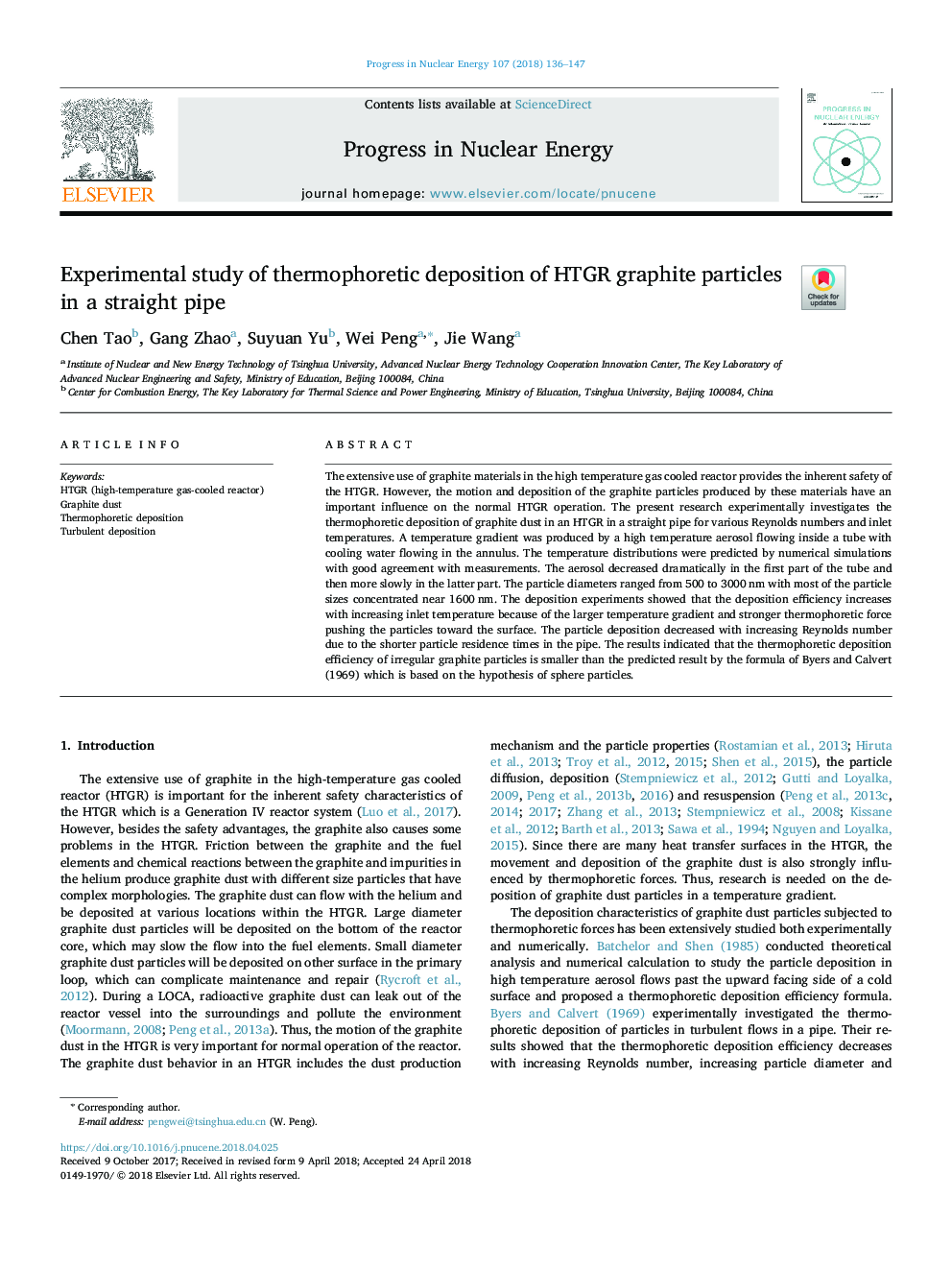| Article ID | Journal | Published Year | Pages | File Type |
|---|---|---|---|---|
| 8084222 | Progress in Nuclear Energy | 2018 | 12 Pages |
Abstract
The extensive use of graphite materials in the high temperature gas cooled reactor provides the inherent safety of the HTGR. However, the motion and deposition of the graphite particles produced by these materials have an important influence on the normal HTGR operation. The present research experimentally investigates the thermophoretic deposition of graphite dust in an HTGR in a straight pipe for various Reynolds numbers and inlet temperatures. A temperature gradient was produced by a high temperature aerosol flowing inside a tube with cooling water flowing in the annulus. The temperature distributions were predicted by numerical simulations with good agreement with measurements. The aerosol decreased dramatically in the first part of the tube and then more slowly in the latter part. The particle diameters ranged from 500 to 3000â¯nm with most of the particle sizes concentrated near 1600â¯nm. The deposition experiments showed that the deposition efficiency increases with increasing inlet temperature because of the larger temperature gradient and stronger thermophoretic force pushing the particles toward the surface. The particle deposition decreased with increasing Reynolds number due to the shorter particle residence times in the pipe. The results indicated that the thermophoretic deposition efficiency of irregular graphite particles is smaller than the predicted result by the formula of Byers and Calvert (1969) which is based on the hypothesis of sphere particles.
Related Topics
Physical Sciences and Engineering
Energy
Energy Engineering and Power Technology
Authors
Chen Tao, Gang Zhao, Suyuan Yu, Wei Peng, Jie Wang,
